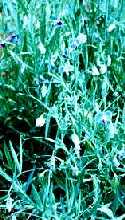View crop
View crop Data sheet EcoPortLathyrus sativus
 |
|
| Notes |
|---|
| BRIEF DESCRIPTION A branched, suberect and climbing, herbaceous legume reaching 40-90 cm in height. The root system is about 50-70 cm deep and branched. USES The pulses are rich in protein, they can be boiled, ground into flour, and fed to livestock. The leaves are cooked as potherbs. It can also be grown for fodder. GROWING PERIOD Annual, winter annual in tropical areas, propagating itself with seeds. Provides groundcover in 60-80 days, flowers after 75-120 days and seeds ripen in 100-180 days and are harvested as soon as leaves begin to turn yellow. COMMON NAMES Grass pea, Vetch, Chickling pea, Chickling vetch, Indian vetch, Lathyrus pea, Blue chickling, Blue vetchling, Sab, Sabberi, Severi, Guaya, Gwaya, Shimbera, Gayau, Khesari, Almorta, Alverjas, Batura, Charal, Chural, Cicerchia coltivata, Gesse commune, Pois carre, Dog-toothed pea, Fovetta, Frijol gallinazo, Garbanzo, Gesse blanche, Gilban, Gilbaan, Gilbane, Indian pea, Khessary pea, Kansari, Kisari, Lakh, Lang, Latri, Lentille d'Espangne, Matri, Matur, Mutter pea, Pe-kyin-baung, Pe-sa-li, Pharetta, Pisello bretonne, Pois carre, Saat platterbse, Sabberi, Santal, Teora, Djilben, Djiben el-biod, Ajilbane, Beiqa, Baqia, Hamikou, Kerfala, Quarfala, Sa'eyda, Julban, Hurtumann. FURTHER INF Grass pea is considered native of southern Europe and western Asia. In India, grass pea is grown from sea level up to 1200 m in elevation and in Afganistan it occurs up to 3500 m. It is well suited for dry climates. Photosynthesis pathway C3. In India average seed yields are 300-500 kg/ha and yields up to 1.5 t/ha have been reported, while 1.3-6.2 t/ha of hay can be obtained. Grass pea are often found as weed in cultivated barley fields. Not all forms of grass pea can be eaten and care must be taken only to harvest the nontoxic types. It can when eaten with the commom vetch (Vicia sativa) have paralytic effects. | Sources |
| SOURCES (L. sativus L.) Kay D 1979 pp 115-123 [TEMP, RAIN, DRA, FER, TEXT] Edwards S 1984 pp 80 Roecklein J 1987 pp 33 [USE, RAIN] Kernick M 1961 pp 266 Duke J 1981 pp 107-110 [TEXT, FER, DEP, DRA, RAIN, TEMP, PH] Monegat C 1991 pp 119 Bermejo J 1994 pp 281 & 287 [RAIN, TEMP, FER, TEXT, PH] Kernick M 1978 pp 453 [RAIN, TEMP, TEXT, DRA, USE] Maesen L 1989 pp 50-51 [USE, TEMP, RAIN, DRA, FER] |